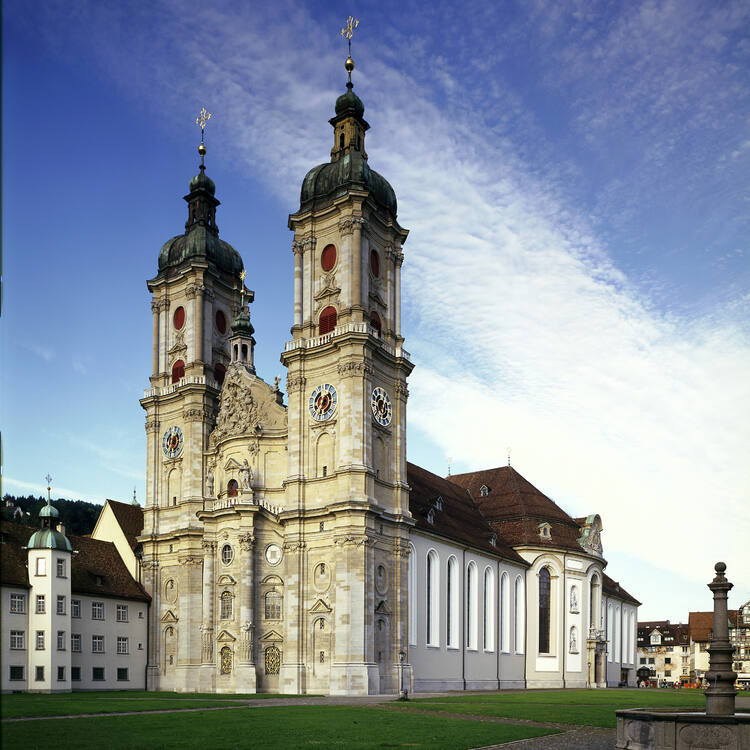Abbey of Saint Gall
In the Swiss city of St. Gallen, there is a disused alley known as the Abbey of Saint Gall which is one of the best Carolingian architectures. It was established by Saint Othmar in 719 on the site where Saint Gall had built his hermitage.
It is regarded as the pinnacle of the magnificent Carolingian monastery and owes a lot to the 18th century's building campaigns, which represent centuries of architectural evolution.
From the High Middle Ages until historicism, nearly every significant architectural era has been significantly imitated.
It is a combination of architectural brilliance made up of many buildings rearranged around the abbey's central square: on the west side is the ancient abbatial church (now the cathedral), which is surrounded by two towers and an old cloister.
There are now about 160,000 books in its High Baroque Library (still in use today).
The 19th-century structures are located in the north and include the former Catholic school, the Children's and Guardian Angels' Chapel, and the historic arsenal.
In addition to the outstanding architecture, this location is noteworthy for the unrivaled cultural significance that has been preserved.
The illuminated manuscripts of the St. Gall School from the ninth and eleventh centuries, the Irish manuscripts from the seventh and eighth centuries, documents describing the historical antecedents of the Alemannic Switzerland provenance, and the plans for the convent during the Carolingian era are just a few examples.
The only text from that time period that has been preserved in its original form represents the Benedictine order's idea of monastic organization.












